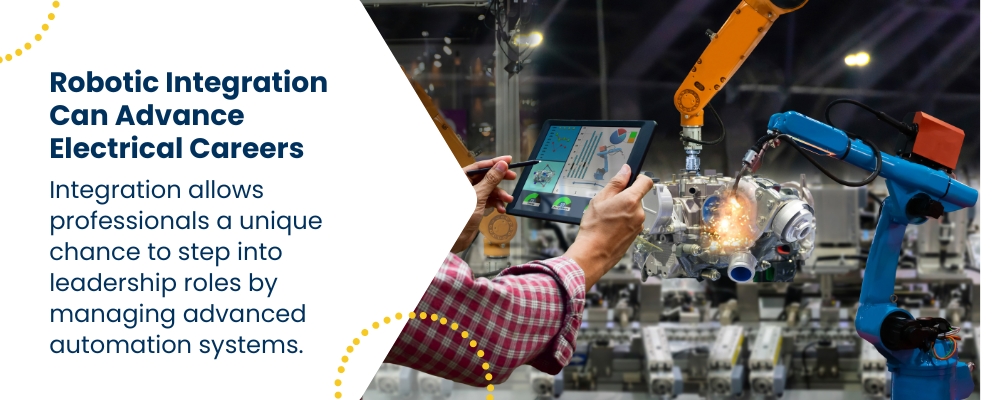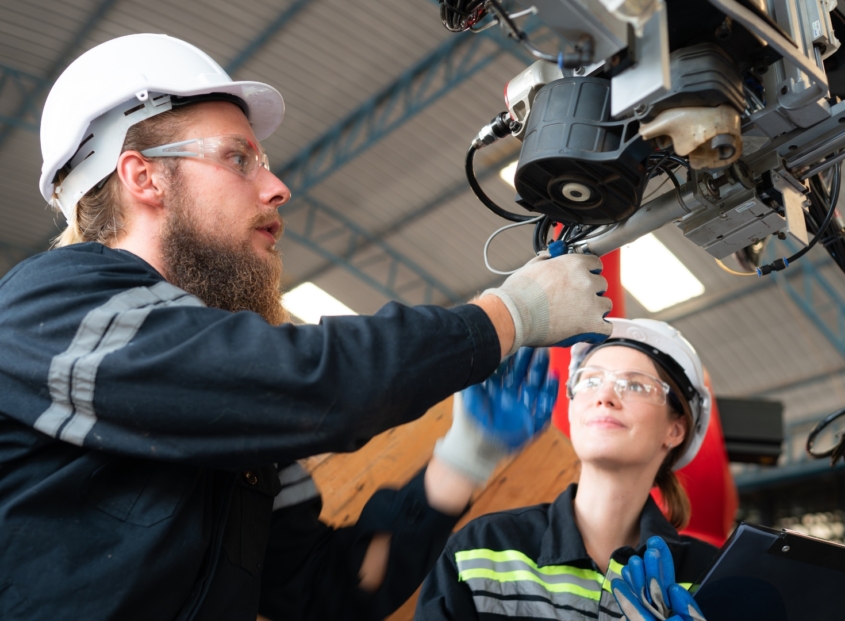Robotics in the Electrical Industry: Impact & Opportunities for Electricians
The future is now. Automation and robotic intelligence are used across industries to drive innovation and relieve workers of pressure. In fact, the global interactive robot market is expected to reach $38 billion by 2033.
Robots Get a Bad Rap—But Here’s How They’re Actually Helping.
Robots offer substantial benefits across multiple industries. For example, as demographics shift and the population ages, robots are poised to make a significant impact in healthcare by supporting caregivers, assisting with daily tasks, and providing companionship to combat loneliness.
In education, robots will help teachers and students, particularly in STEM subjects, while also offering valuable support for special education needs. In the military and government sectors, they can enhance safety by assessing potentially dangerous situations before human involvement is required. This expanding field presents an exciting opportunity for electrical professionals to lead the way in integrating and managing these advanced technologies.
So, how is the robotic evolution revolutionizing the electrical industry? Read on to see what automation has in store for the profession.
The Role of Robotics in the Electrical Field
The electrical profession has historically been associated with human labor and expertise. This intricate field relies on high-level skills and manual precision. Today’s electricians can leverage their training through robotic integration.
Robotic integration in the electrical field involves merging machine intelligence with human know-how. Currently, robotic engineering is used to handle repetitive and dangerous tasks. For example, robotic arms tackle the precise task of electrical part assembly, and automatic systems run crucial safety checks.
The future of robotic integration will maximize new technologies to enhance efficiency, precision, and safety. Integration’s primary goal is to complement human expertise so that contractors and electrical engineers can provide outstanding, futuristic service.
Robotics & Electrical Professionals: Building the Future Together
The collaboration between human expertise and robotic tech presents new opportunities for contractors and electricians. This collaboration can mitigate safety hazards, improve repairs and upgrades, and bolster sustainable energy management.

Advanced Diagnostics & Efficiency
Diagnosing electrical issues correctly and quickly is critical for any contractor and electrician. Robotic systems continuously monitor electrical systems and then use the data to amplify accuracy and predict potential problems.
Innovative thermal imaging sensors, for example, can analyze electrical units and locate problems with overheating circuits and wiring. Automation also processes data faster than humans, reducing diagnostic time and letting contractors focus on what they do best: expert advice and professional action.
Working with robotic intelligence produces proactive solutions for the electrical profession by pinpointing problems before they become serious.
Improved Safety
Safe work conditions are essential to electricians working in the field and contractors protecting employees. Globally, 1.2 million people fall victim to electrical injuries every year. Robotics can reduce the potential for injury or death by taking over tasks in dangerous environments by:
- Identifying risks before they become hazards for customers and workers
- Working with high-voltage equipment that could cause serious injury
- Fitting into tight or unsafe spaces that humans can’t or shouldn’t enter
Robotics Won’t Replace Electrical Pros—Your Expertise Is Irreplaceable
There might be concerns about the human role in a constantly evolving robotic world. However, machine intelligence cannot replace the professional judgment of contractors and electricians. Instead, it allows for new opportunities.
A key benefit of robotic integration is that electrical professionals can advance into leadership roles by overseeing automation systems, making training in the latest technology essential. Continuous education in the electrical field supports job growth, enhances security, and helps secure top wages.
Check out our membership page to learn more.


